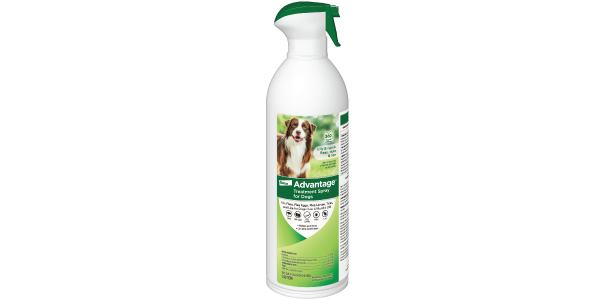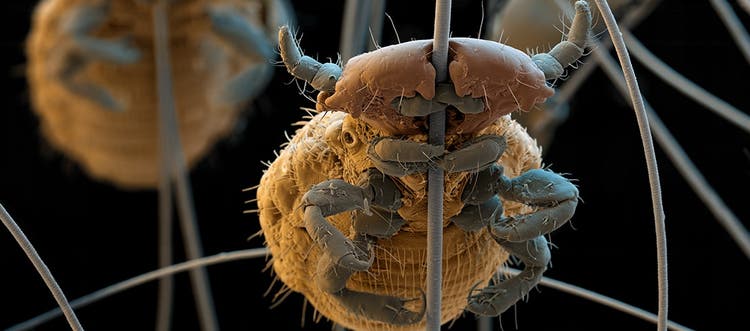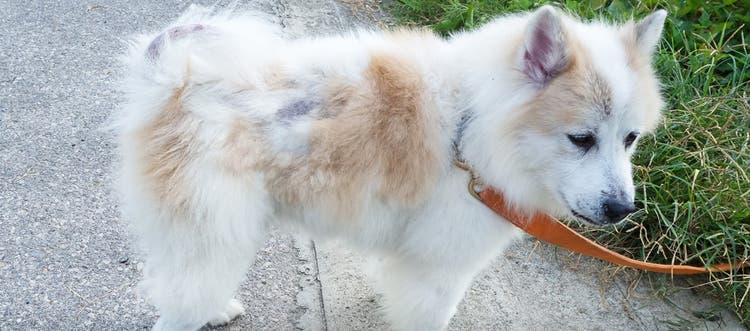What to do if your dog has lice.
If you’ve ever wondered whether dogs can get lice, the answer is yes. Although lice infestations are uncommon and not diagnosed often in dogs, like any pest, they can be a nuisance for your pet. Here’s what you need to know about lice infestations on dogs.
How Do Dogs Get Lice?
Dogs can get lice in several ways:
- Other infected dogs
- Grooming tools contaminated with lice or their eggs
- Overcrowded housing
- Poor sanitation
- Illness, malnourishment, stress or age
Can Dogs Get Lice from Humans?
No, dogs can’t get lice from humans, and humans cannot get lice from dogs, either. Lice are species-specific, meaning dog lice stay on dogs and human lice stay on humans.
How Do You Know If Your Dog Has Lice?
Lice, like fleas, can be seen when the hair is parted — which is one of the many reasons it’s important to check your dog’s coat regularly. Lice are about the size of a sesame seed and yellow to tan in color. They live on and around hair shafts, clinging to the dog’s hair and eating skin cells, dander and gland secretions. They can also be found around wounds and body openings.
If your dog has lice, they may show the following symptoms:
- Itchiness
- Hair loss
- Redness
- Flaky and/or greasy skin and coat
If you notice any of these symptoms, check your dog for adult lice or eggs (also called nits), which appear as white specks that stick firmly to the hair shaft. Adult lice commonly stick to the hair as well, though they could also be walking around.
Be aware that dogs in close proximity can pass eggs or lice to one another through shared bedding and living quarters. If you have more than one dog — even if only one shows signs of lice — you should have all of them checked by the vet.
How Do Lice Hurt Your Dog?
A dog that has lice is uncomfortable, but that’s not the only potential problem. Lice can transmit tapeworms if your dog ingests them from licking and chewing their skin. Lice can also cause bacterial skin infections on your dog. If you find lice on your pet, you’ll want to seek treatment right away to avoid compounding the problem.
How Can You Treat Lice on Dogs?
The good news is that lice infestations are treatable. Treat your dog with a collar, topical or spray labeled to kill and control lice. Some flea products are also labeled effective against lice — so regularly administering flea prevention can have the added bonus of lice protection.
At the end of the day, having lice is mostly a nuisance and not something that should worry you too much. That being said, it’s good to be aware of the signs and symptoms, so you can purchase a treatment product at your local pet retailer or veterinarian to prevent further problems.

Seresto® Flea & Tick Collar for Dogs
An easy-to-use, odorless, non-greasy collar that kills and repels fleas and ticks for 8 continuous months.

K9 Advantix® II
A convenient, monthly topical application that kills and repels fleas and ticks through contact, so they don't have to bite your dog to die. Do not use on cats.

Advantage® Treatment Spray for Dogs
Kills fleas, ticks and lice. The active ingredients inhibit development of immature flea stages (preadult fleas and flea eggs) as well, which prevents them from growing into adult fleas that are capable of biting.


